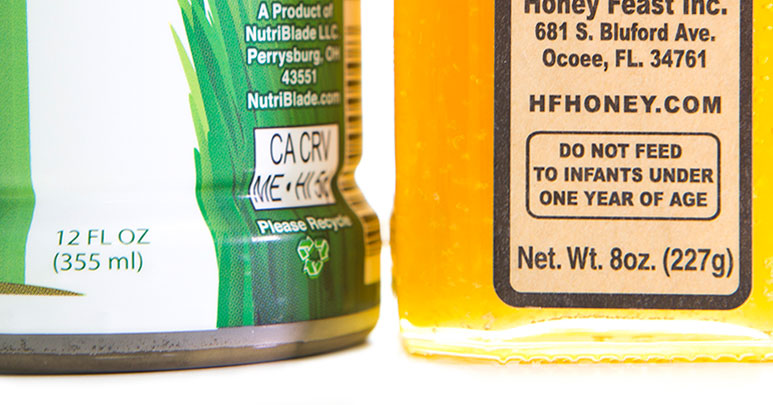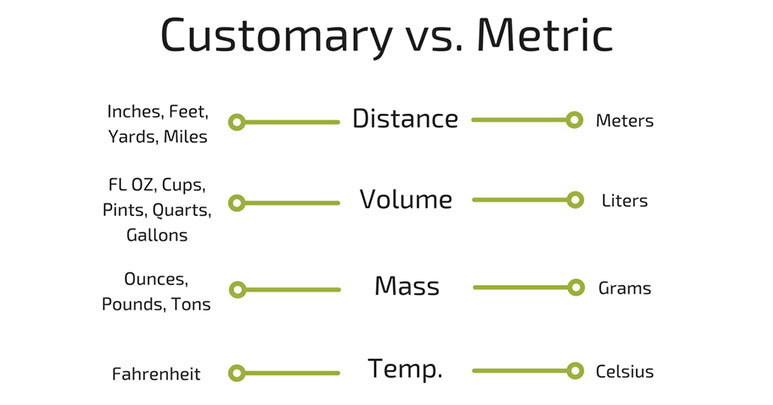
Whether you’re launching a new product or taking your small business to the next level, your product labels will need to have the volume or weight listed which means putting fluid ounces or net weight on the label (often abbreviated as “fl. oz.” and “net wt.,” respectively). In this article, we’ll explain the difference between fluid ounces and net weight, measurement unit systems, and how to get an accurate measurement for your product labels.
The Difference Between Fluid Ounces and Net Weight
Fluid ounces measures the volume of a liquid and net weight measures the mass of a solid. You may have heard of ‘gross weight’ but it shouldn’t be listed on product labels because it can be confusing and misleading to consumers. Gross weight combines the weight of the contents and container, whereas the net weight only measures the contents. An instance where gross weight would be used is for shipping purposes to calculate costs.
Since fluid ounces and net weight measure different things, they don’t equal each other. For example, 8 fl. oz. of juice doesn’t equal 8 net wt. oz. of chips. It’s easy to determine which measurement to use for most products but what about viscous contents like honey or lotion?
According to the Food and Drug Administration’s (FDA) label regulations on the net quantity of contents: if the food is solid, semisolid, or viscous, it should be expressed in terms of weight. If the food is a liquid, it should be expressed in a fluid measure (e.g., fl oz). For non-food products, such as lotions or dish detergents, fluid ounces should be listed on the label.

U.S. Customary And Metric Measurement Systems
As you probably remember from school or traveling abroad, there are two types of measurement systems in the world – customary and metric. The majority of the world uses the metric system except for three countries: the United States, Liberia, and Burma. If you’ll be using metric units for your product labels, an easy way to convert from liters to milliliters is to multiply by 1000 (and vice versa, to convert milliliters to liters you would divide by 1000). The same principle is applied to grams and meters.
- 1 gram (g) = 1000 milligrams (mg)
- 1 kilogram (kg) = 1000 grams
- 1 liter (L) = 1000 milliliters (mL)
Customary units, however, are a bit more complicated since they’re not based on a system of 1000.
- 16 ounces (oz) = 1 pound
- 2000 pounds (lb) = 1 ton
- 1 gallon (gal) = 4 quarts
- 1 quart (qt) = 2 pints
- 1 pint (pt) = 2 cups
- 1 cup (c) = 8 fluid ounces (fl oz)
Depending on where your product will be sold, you may need to list both units of measurement or print multiple versions of a label for different regional markets. Digital printing is ideal for printing multiple label versions, especially if your order is 10,000 custom labels or less. If your product will only be sold in the United States, then you’re good with just using customary units on your labels – but you may want to consider listing both unit types anyway for international consumers visiting or living in the United States.
How To Measure Fluid Ounces Or Net Weight
After you’ve determined whether you’ll need to list fluid ounces or net weight on your labels, the next step is to measure your product contents. You may already know how much contents you have depending on the type of container you use since bottle manufacturers often list volume quantities. Mass, however, is a little more tricky due to differences in density. For example, one pound of honey takes up less space than one pound of pretzels because it’s denser.
If you don’t know your product’s fluid ounces, you can use a kitchen measuring cup to measure volume. To determine net weight, you can use a digital or mechanical scale, just make sure to subtract the weight of the container from the total weight. Most measuring cups and scales display customary and metric units which are convenient if you need to list both on your product labels. When you have your measurement, include it with other important information like Nutrition Facts, an ingredients list, barcode, etc. to send to your label designer so he or she can add that to your label artwork.
Once your label artwork is ready, all you have to do is to contact us for custom printed labels! The easiest, fastest way to get started is to use our online quote tool, but if you need more information or assistance, please call 1-800-475-2235 or email sales@consolidatedlabel.com.


